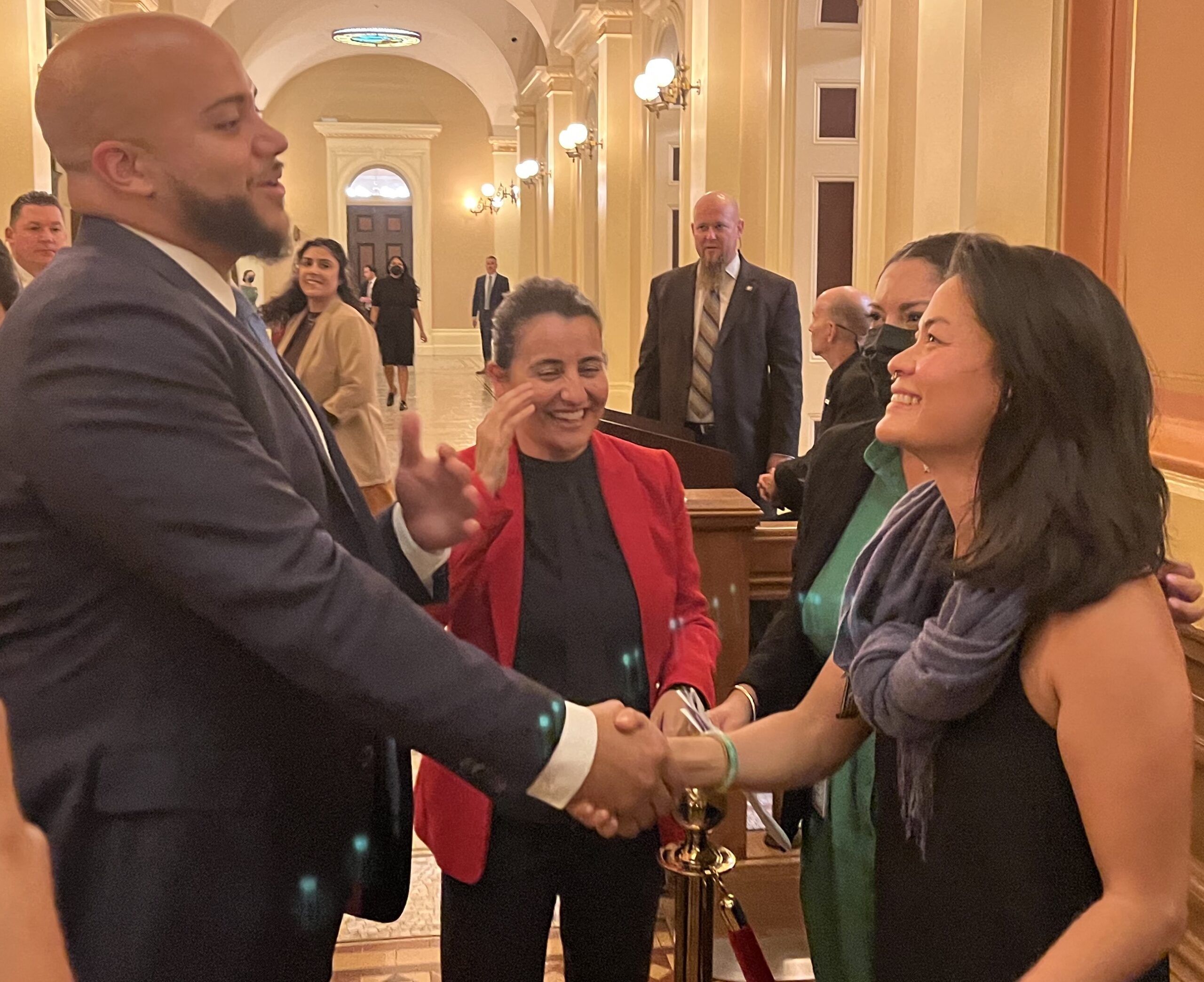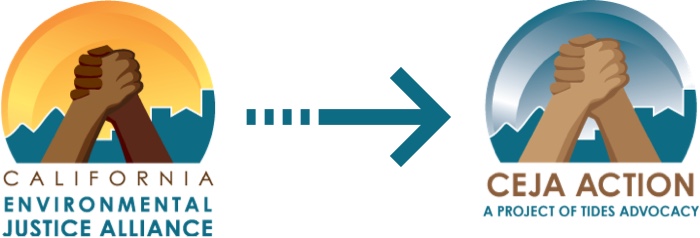Thank you for building power with us in 2022.
Twenty-one years ago, six environmental justice organizations from across the state came together to form a policy working group. At that time “environmental justice” was a little-known and poorly respected concept in California public policy. In the two decades since our founding, the California Environmental Justice Alliance has grown to include ten organizations and notched historic policy victories. This coming year marks CEJA’s tenth annual legislative scorecard, the successful launch of our 8th voter guide, and an expanded knowledge of environmental justice and environmental racism inside and outside of Sacramento.
But polluting industries have adapted as well: with green-washing and “woke-washing” efforts to frame their profiteering as somehow socially conscious or even beneficial. In spite of the millions of oil and gas; real estate; and big agricultural dollars flowing in to smooth the path of harmful legislation, our alliance has continued to uphold our vision of healthy communities and a climate future for all. Here’s what we won in 2022—and how we fought for it.
Passing health and safety legislation.
After decades of litigation, policy, and grassroots organizing by our member organizations the Center for Race Poverty and the Environment, Communities for Better Environment, Physicians for Social Responsibility – Los Angeles, and Strategic Concepts in Organizing and Policy Education, our communities succeeded in passing legislation to create health and safety buffer zones between oil and gas wells and the places where people live, work and play.
The safety buffer zones law, when enacted, will protect children, students, families, elders, and incarcerated folks from the cancer-causing pollution of new oil and gas wells. In the new year, our communities will face a new challenge in the form of an oil-industry funded ballot initiative intended to delay the health and safety buffers: but for now, we celebrate the first step towards an end to neighborhood drilling.
Even as we fought for the health and safety buffer zones between people and oil wells, advocates and residents waged a parallel struggle to ban the use of captured carbon for oil drilling in California. Our Central Valley members along with the Central Valley Air Quality Coalition sponsored SB 1314 (Limon) to prevent a major oil industry grift from taking root in California.

Advocates celebrate the passage of the 3,200 ft oil and gas buffer zones bill with Asm. Bryan and Sen. Limon.
Carbon capture and storage is the industry’s latest greenwashing scheme. By attaching the costly technology to biomass facilities, refineries and gas power plants to ‘capture’ carbon emissions, industry lobbyists make the case for extending the lifeline of those polluting facilities. In much of the country, the captured carbon is then piped into oil fields and used to force still more oil out of the ground in a process similar to fracking.
While California’s climate strategy should not rely on any CCS at all, we celebrate the passage of SB 1314 (Limon) to successfully ban the use of CCS for enhanced oil recovery in California – closing another polluting loophole.
We celebrate these incredible victories and the leadership of our San Joaquin Valley and Los Angeles members in securing these hard-fought wins.
Expanding renewable energy access.
Alongside solar energy and environmental allies, the Asian Pacific Environmental Network and CEJA partnered to support legislation to create a community solar and storage program for low income residents to better access cheap, reliable clean energy. Utility debt and solar segregation in California mean that too few working class communities of color have access to clean, reliable, and renewable energy. SB 2316 (Ward) takes a step towards addressing the clean energy access and affordability crisis by allowing renters, low-income residents, and community organizations serving low-income Californians to subscribe to renewable energy programs and receive guaranteed bill savings.
Also in 2022, our partner the Leadership Counsel for Justice and Accountability (LCJA) and a coalition of housing justice groups introduced AB 2597 (Bloom) to establish mandated air and cooling units for all housing units. Californians continue to suffer from extreme heat. Historically redlined and rural communities face additional heat due to the lack of resources, green spaces, and water access in their communities. SB 2597 would have required cooling as part of state building code. While this bill stalled in the legislature, LCJA worked with the Governor’s office to enact and dedicate $5 million towards cooling for all residents.
Changing how state climate plans are written.
Too often, California regulatory policy remains a black box: difficult to understand and navigate as a concerned and impacted resident, and far too easy to engage as a wealthy lobbyist.

Irma Lopez of Southeast LA and CBE speaks at the June #OurClimateFuture rally at CARB.
This year, CEJA residents, advocates and organizers from across the state came together to lead powerful co-learning organizing sessions on the state Climate Change Scoping Plan and to demand that the climate blueprint delivers results for working Californians and not just for industry representatives. Together, our movement sent over 10,0000 letters to members of the Air Resources Board and the Governor. Over 200 residents rallied to the June CARB meeting to give public comment and call for a scoping plan without carbon capture and storage on fossil fuel infrastructure, a timeline for a fossil fuel phaseout, and no giveaways to industry in the form of polluting alternative fuel grifts.
The result of our advocacy is a climate blueprint with significant victories for frontline communities. The scoping plan includes bold targets for expanding mass transit, the commitment to no new gas power plants, and an interagency taskforce to coordinate the phasedown of oil production in California. And while the plan’s targets – if implemented – would lead to billions of dollars of subsidies for carbon capture and storage scams, our residents, organizers, and advocates refused to let those sky-high targets pass unnoticed into the state plan. Over the course of the planning process, hundreds of residents testified to the impacts of CSS, of the impacts of refinery and gas power plant pollution and harms of dairy-biogas pollution in this state.
We also won important procedural elements, including a permanent Environmental Justice Advisory Committee to engage in the implementation of the plan, ensuring that there are more opportunities to continue our advocacy. We secured the guarantee of a publicly accessible process to create the regulation for any new carbon capture and storage projects in the state. And as the Air Resources Board starts to engage in a new edition of hearings intended to bring some oversight to alternative fuel crediting in California, our members are committed to reforming the Low Carbon Fuel Standard to close yet another industry-benefiting and community-harming loophole in the state’s climate policy.
Building environmental justice political power
CAUSE members canvass with the CEJA ballot measure voter guide.
In 2023 we will see 33 new statewide decision-makers, dramatically changing who will be making some of California’s most important decisions on our behalf. CEJA members mobilized voters to the polls during this election across California to cast important decisions for reproductive health, funding for public school students and who will represent in life-saving and changing decisions.
CEJA’s sister c4 organization, CEJA Action endorsed 19 candidates and we are proud of the 13 new legislators voted in by to represent environmental, social, and economic justice values. Their proven professional and political leadership will be imperative to center environmental justice communities and protect California from worsening climate change and pollution in their decisions making. We look forward immensely to continuing our work with a strong EJ crew in Sacramento.
Looking towards 2023: strategic planning for our movement.
CEJA’s previous strategic plan, conducted in 2018, laid the foundation for our current policy priorities and electoral power building. The last planning process grounded our advocates and members in a theory of change and action to win community rooted policy solutions.
This year—even as our members organized campaigns, held rallies, led resident meetings, and testified in the state Capital—our alliance also began to meet to discuss our next strategic plan.
Next year we intend to go deeper and further with that planning process, charting long-term transformative campaign priorities, and focusing on the strategies which will strengthen our movement for the long term.
We are lucky to stand on the legacy of movement builders who come before us and to stand, today, shoulder to shoulder with environmental justice leaders from across California: with youth and with elders; with first-time action takers and experienced political organizers; with folks who are fighting for the clean air to breathe, clean water to drink, affordable and safe places to call home.
Onwards to 2023 with gratitude and strength,
Team CEJA
Members of the California Environmental Justice Alliance celebrate victories, discuss challenges of the past year at a December 2022 retreat.

